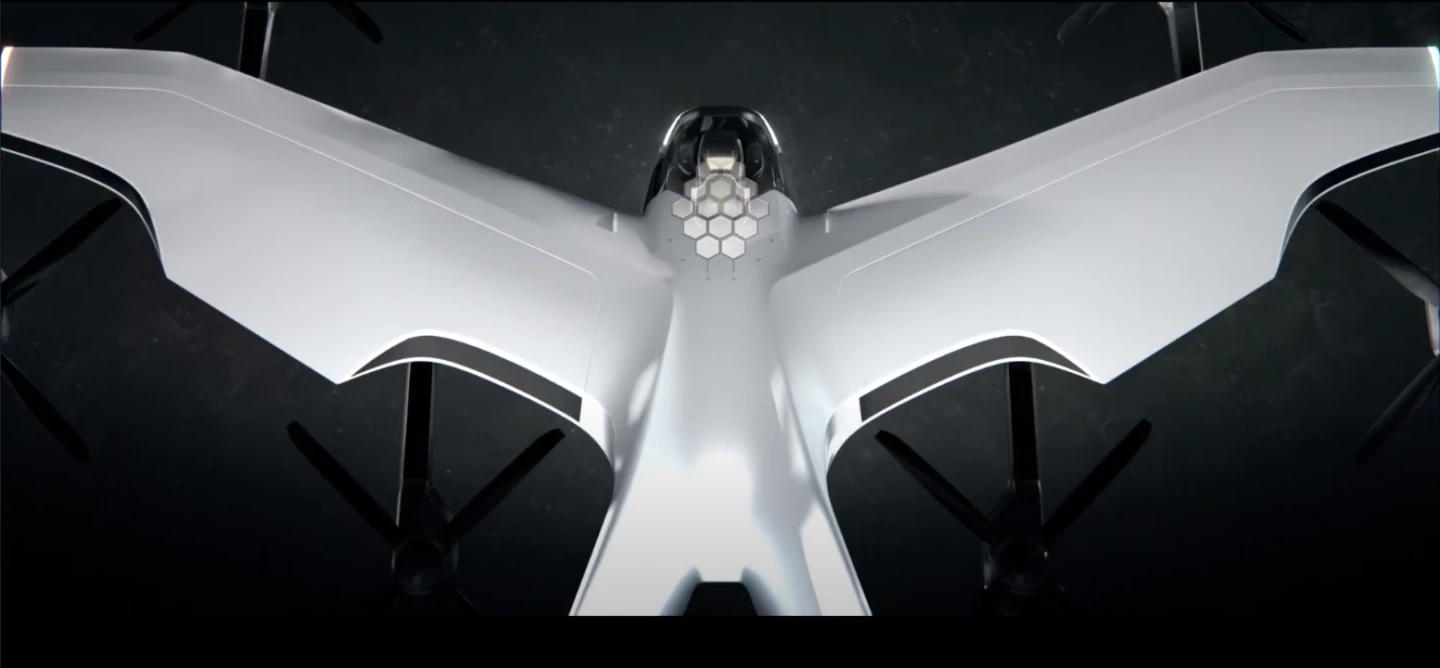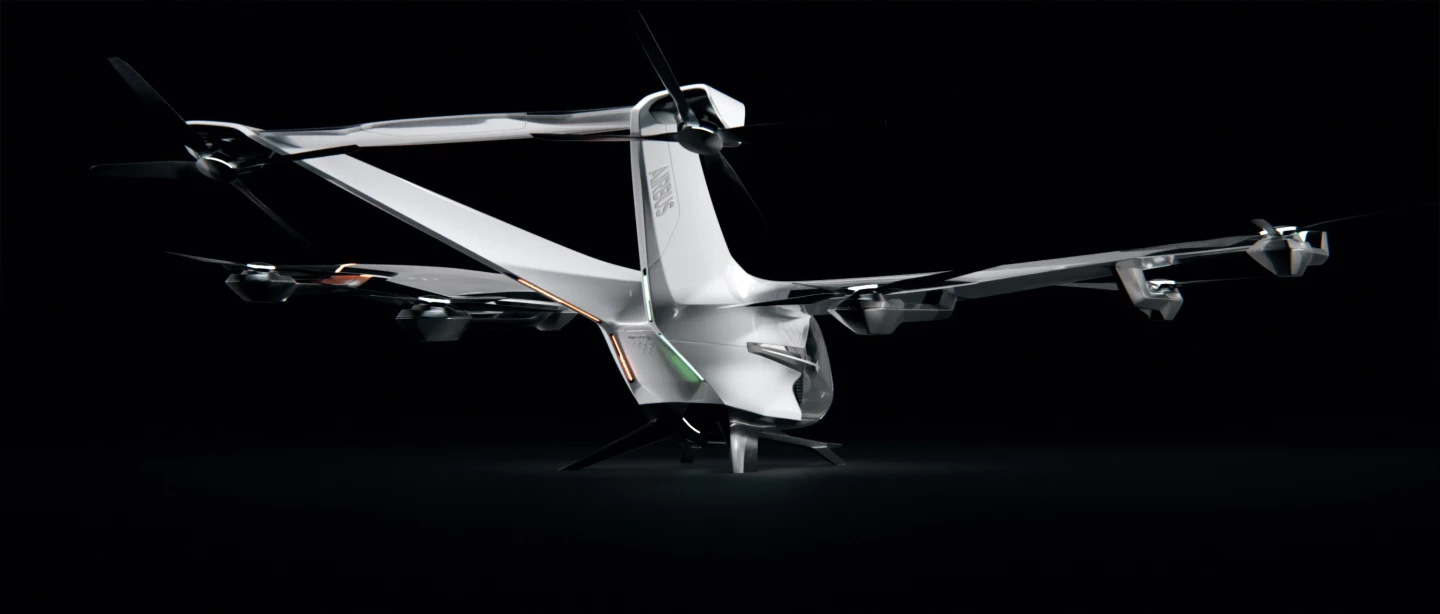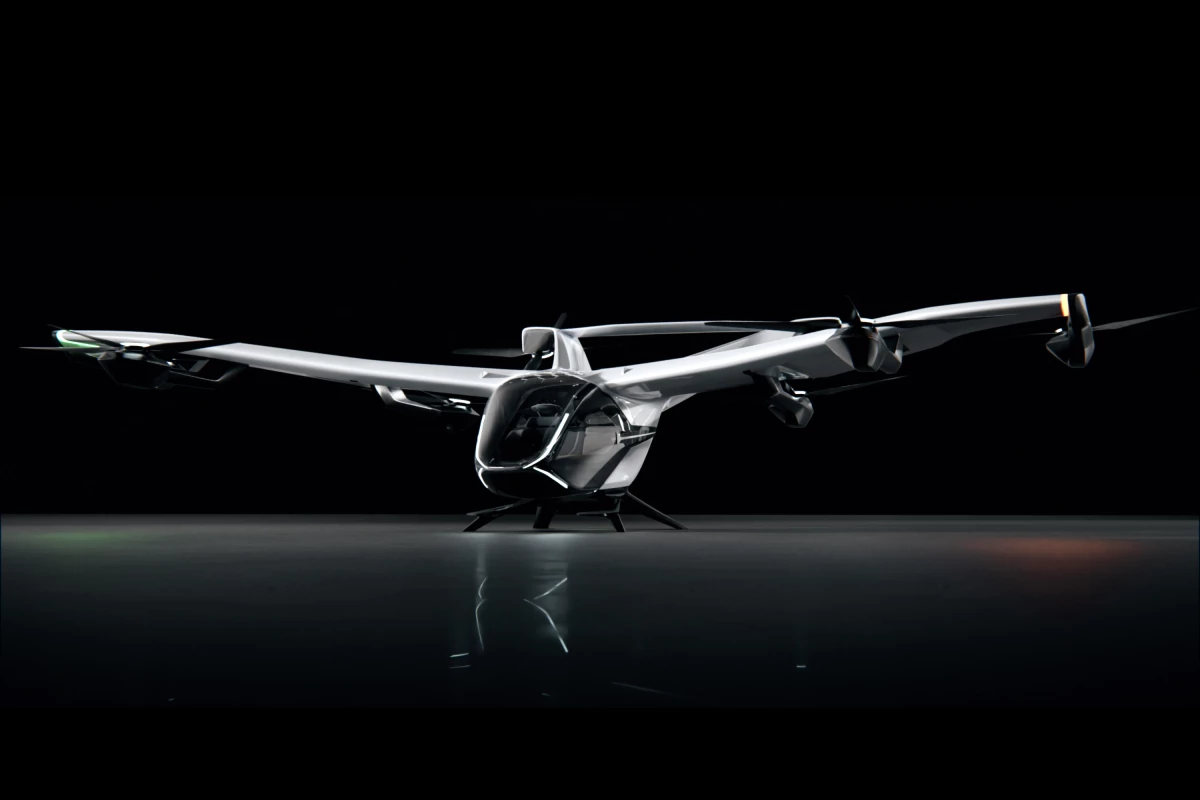Airbus has been quiet on the eVTOL front since its original CityAirbus multirotor and Vahana programs shut down, but at its "Pioneering Sustainable Airspace" summit, the company released details and images of a new electric air taxi it expects to get certified by 2025 – a clean-sheet design with a surprisingly humble set of capabilities.
The new "NextGen" design is very pretty to look at. It appears to be a hybrid lift and cruise type design, with six vertical lift props extending out on short arms from a wide, forward-swept front wing that looks a bit like something Batman might fly when viewed from above.
Additional lift is supplied by two more rotors at the rear, which are part of a chunky V-tail design joined at the top with an additional wing surface. The rear rotors appear to be mounted on very compact tilt-rotor systems, enabling reasonably efficient forward flight – although the lift rotors don't appear to stow or fold away, so they'll add parasitic weight and drag in cruise mode.

It's only a four-seater; Airbus will initially take up one of those seats with a pilot, but the French company is definitely looking ahead to a point where these things will fly themselves autonomously.
It won't go particularly fast or far, either, a fact that's really got us scratching our heads. Airbus is estimating top speeds of just 120 km/h (75 mph) and a range of just 80 km (50 miles) between charges of its ~60-kg (132-lb) lithium-ion battery pack. Those figures are frankly abysmal in the emerging eVTOL world, particularly among similar winged designs where speed and range figures are routinely three times what Airbus is promising here.
Considering the immense effort and expense involved in bringing these eVTOLs to market, and the extra complexity and expense involved in making a transitioning airframe, it seems bizarre to us that a company with Airbus's resources would shoot so low on the spec sheet on a project this important at the dawn of a new air mobility movement.

Perhaps the team sees an advantage in keeping costs low, but every extra minute these things spend hooked up to a charger during peak operating times is money lost for whoever's operating it. Perhaps this is specifically an urban design and there's a faster, longer-range design being developed in parallel. But it's certainly got us wondering.
Airbus is highly conscious of the noise factor – eVTOLs are many times quieter than helicopters, but should they begin flooding our cities in great numbers, noise will likely be the biggest negative they bring with them. This design, says the company, should create noise levels under 70 dB in the landing phase – about the level of regular traffic, or a vacuum cleaner.
The company will progress the design through the necessary engineering, prototyping, testing and certification phases, and says it's expecting to have the NextGen CityAirbus flying in 2023, and fully certified by 2025. It doesn't plan to operate a service itself, and will instead sell the aircraft to service providers.
Check out a short video below.
Source: Airbus









